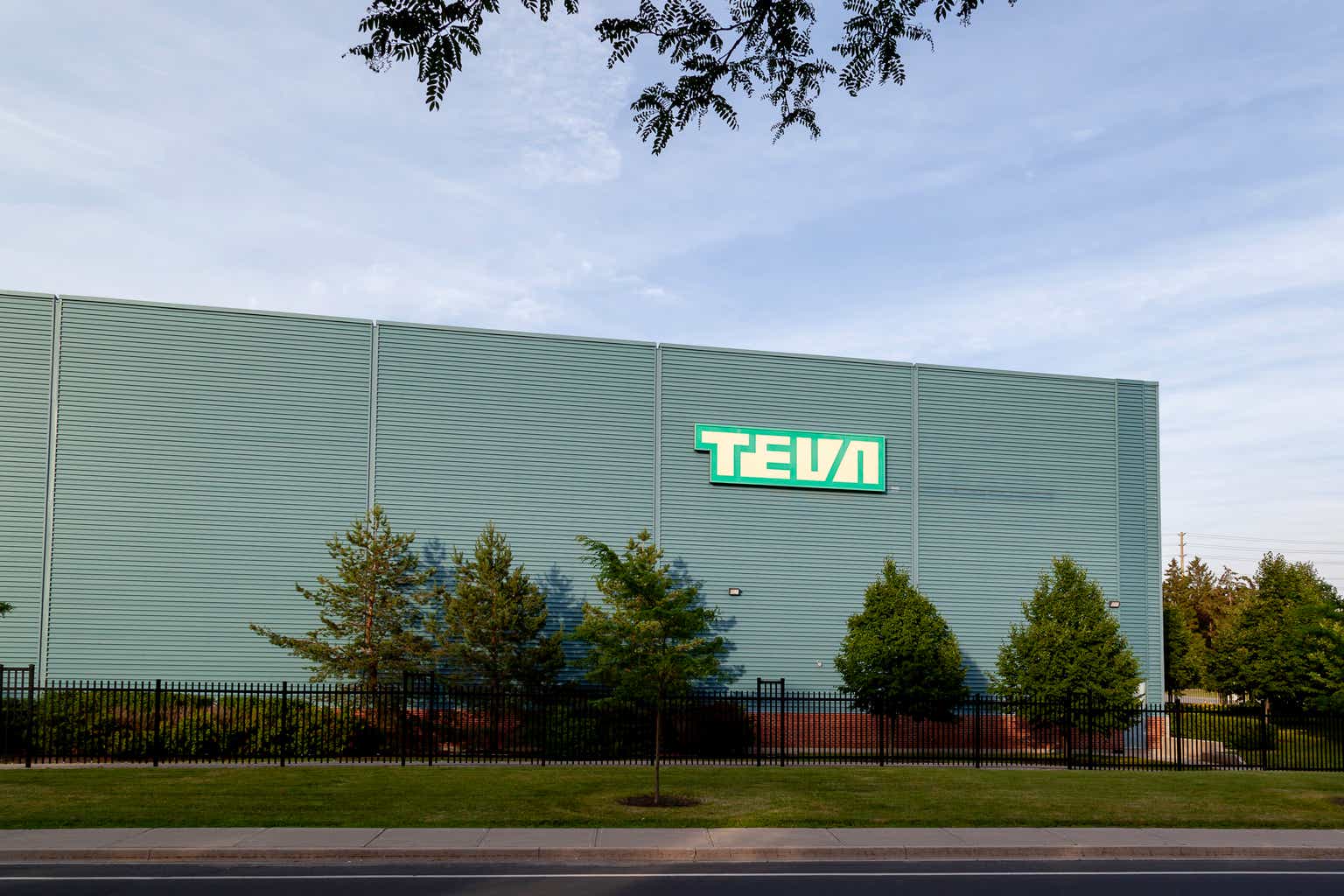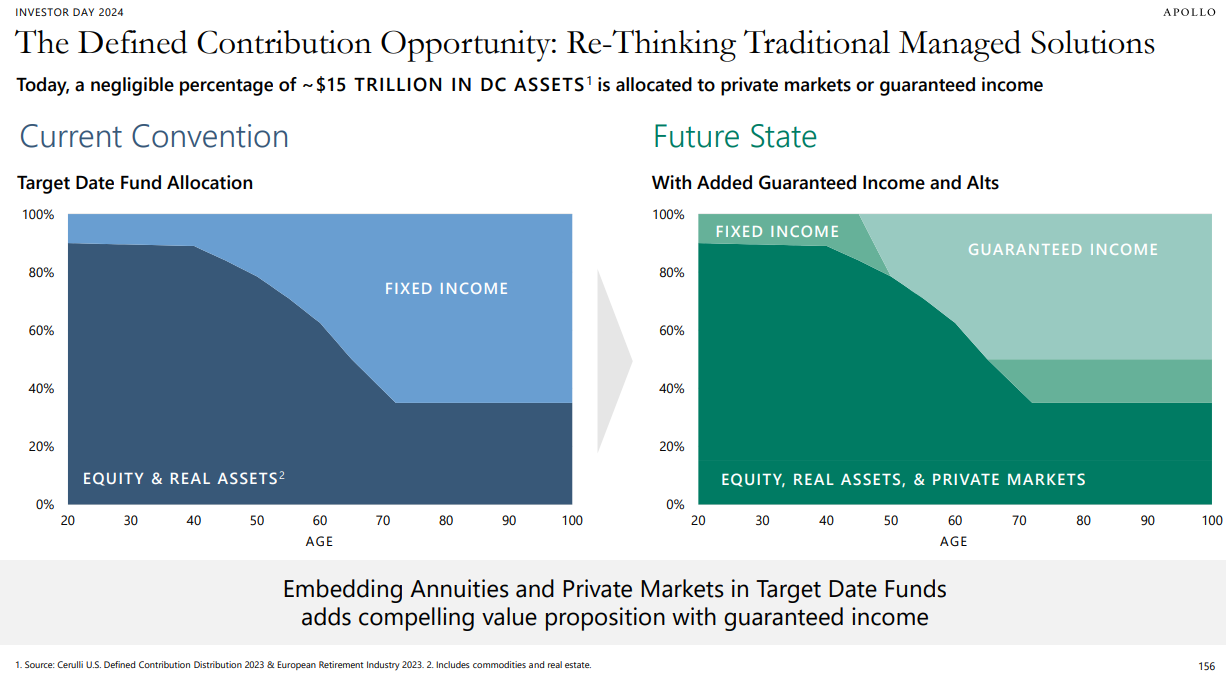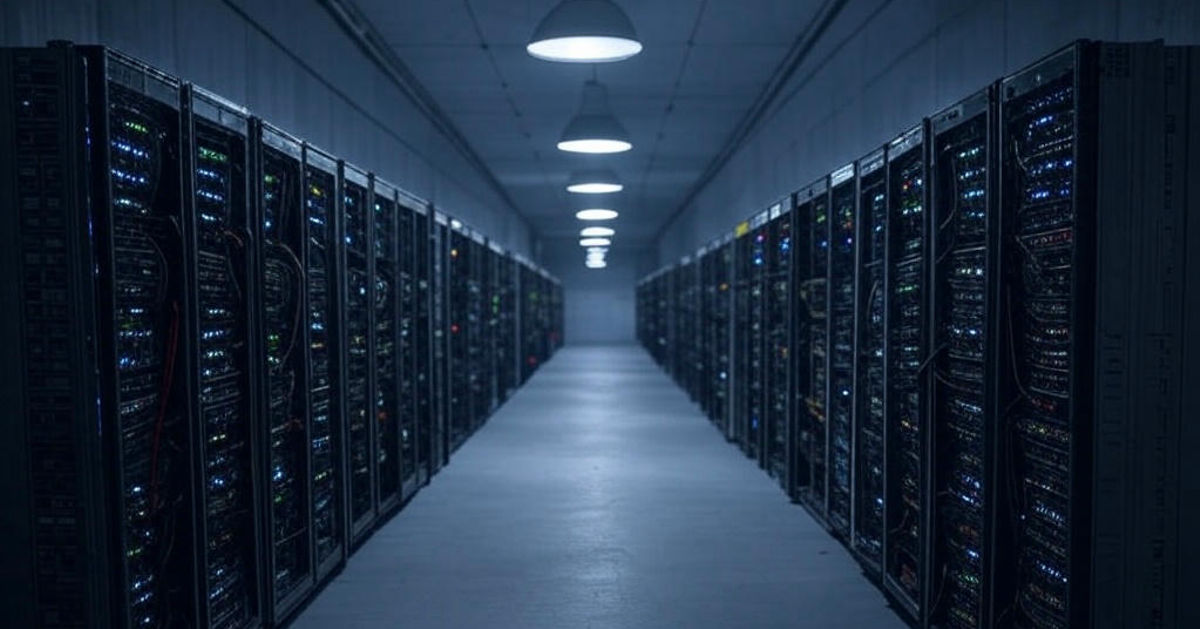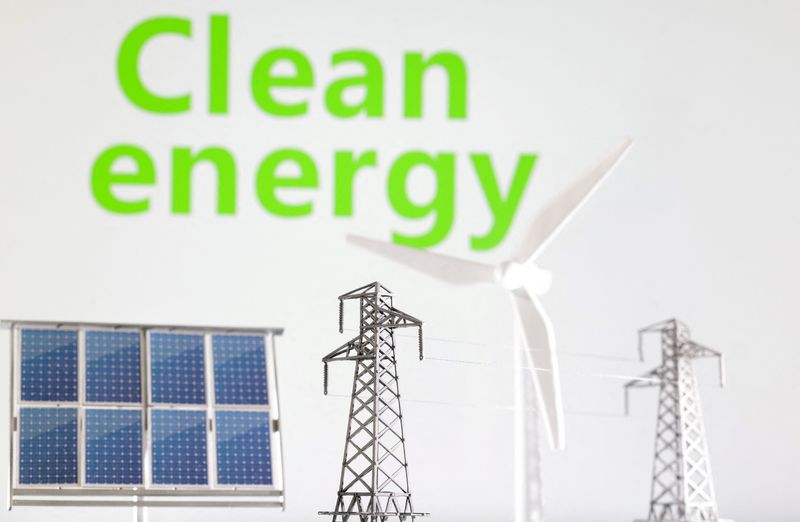Nuclear fusion is the tech that could power AI and save the planet—if it ever works
Recent fusion breakthroughs have generated interest from investors like Sam Altman and Bill Gates—along with some unrealistic expectations.

Sam Altman is confident that we’ll unlock the power of the stars soon.
The billionaire CEO of OpenAI claimed in an interview with Bloomberg in January that “fusion’s gonna work” in the next few years—thanks to Helion, a company where Altman is the chairman of the board and one of the main investors.
If Altman is right, it would herald a new era. Nuclear fusion holds the promise of clean, cheap, abundant, reliable energy. With no carbon emissions and no obvious physical limitations on their location, dependable fusion power plants could permanently transform the world. Fusion could theoretically power energy-hungry emerging technologies like generative AI, cryptocurrency mining, and even interplanetary travel, while also turning the tide in the battle to curb climate change.
But if Altman’s prediction sounds familiar, it’s because he has made similar ones before, and they haven’t worked out. In 2022, he claimed that Helion would “resolve all questions needed to design a mass-producible fusion generator” by 2024. Helion itself announced in late 2021 that it would “demonstrate net electricity from fusion” on that same timetable. But 2024 came and went without any news of a breakthrough from the startup.
Such cycles of bold claims and deflating disappointments are part of a long tradition. The promise of fusion power has been a dream for decades, pursued by scientists, governments, and corporations the world over—and there’s a similarly lengthy history of fusion failing to arrive when predicted. There’s even an old joke that fusion has been 30 years away for the past 60 years.
Yet something may be different now. Recent scientific breakthroughs have suggested that new approaches to fusion could work—and a growing number of startups are claiming that they can commercialize the technology at a much faster pace. While Helion’s promised timeline is aggressive even by the standards of the nascent fusion industry, at least half a dozen companies are promising to have fusion power on the grid roughly 10 years from now, at competitive market rates.
Investors are taking notice. The number of private fusion ventures has tripled in the last ten years, and total investment in the industry in the past two years alone amounts to more than $2 billion. Much of that money is coming from big names in Silicon Valley and beyond, including Peter Thiel’s Mithril Capital, Bill Gates’s Breakthrough Energy Ventures, Masayoshi Son’s Softbank, Kleiner Perkins chairman John Doerr, and Khosla Ventures.
The involvement of tech VCs could mean that fusion’s time has come—or it could mean that the endorsement of prominent leaders like Altman is inflating a bubble of hype. After years of false starts, are these companies on the verge of an epochal breakthrough? Or is fusion still 30 years away?
Fission is easy; fusion is elusive
Nuclear fusion is fundamentally different from nuclear fission, the kind of reaction that all existing nuclear power plants use. In fission, a large unstable atomic nucleus (like uranium) splits apart, releasing a large amount of energy. Fission happens naturally on Earth, without human intervention. (There was even a natural fission “reactor” that came about by pure happenstance in Africa, 1.7 billion years ago, when enough uranium ore was pushed together by geologic forces to set off a chain reaction.)
Not so for fusion. Fusion happens when two light, stable nuclei, like hydrogen, are forced together to form an even more stable nucleus, like helium. This releases about four times as much energy as fission, pound for pound—and about four million times as much energy as burning coal.
There's an old joke that fusion has been 30 years away for the past 60 years.
The challenge is that those light atomic nuclei really don’t want to fuse together in the first place. Atomic nuclei are positively charged, which means they repel each other. Overcoming that repulsion requires phenomenal force. The only place in our solar system where this happens naturally is in the core of the Sun, where the crushing gravitational pressure of the Sun’s mass—over 300,000 times that of Earth—crams hydrogen nuclei together.
Recreating those conditions here on Earth has been a long-standing scientific challenge. In the 1930s, physicists discovered that fusion wasn’t too difficult to accomplish on a small scale, but it was inefficient, producing far less energy than it consumed. The development of hydrogen bombs in the 1950s proved that it was possible to get net energy out of artificial fusion—but in an uncontrolled and highly destructive way.
Since then, the leading method for producing usable fusion energy has been a device known as a tokamak: a doughnut-shaped chamber ringed with powerful magnets to keep the hot plasma (ionized gas) inside from touching the chamber walls. No tokamak has ever produced more energy than it consumes. Still, for nearly 70 years, scientists have constructed a series of increasingly large and powerful tokamaks that have come closer and closer to that threshold, culminating in the International Thermonuclear Experimental Reactor (ITER), a 100-foot-wide device currently under construction in southern France.
ITER’s ultimate goal is to generate 10 times more energy than the plasma absorbs. But equipment problems have led to construction delays, and ITER isn’t expected to be complete until around 2034. And while ITER does plan to demonstrate net power from fusion, it won’t be used to generate electricity—it’s only intended as a proving ground for developing the technology needed to build a power plant. Assuming the timeline doesn’t slip further, a fusion plant based on ITER research wouldn’t be operational until the 2050s at the very earliest.
While the world was waiting for ITER, another approach to fusion arrived. In 2009, the National Ignition Facility (NIF), at Lawrence Livermore National Lab in northern California, came online. NIF’s method for fusion is fundamentally different from tokamaks: A tiny spherical pellet of fusion fuel—hydrogen—is compressed using the most powerful laser system in the world for a few nanoseconds, producing a burst of energy.
Unlike ITER, NIF, with its short laser pulses, was never intended to be a proof of concept for a fusion power plant: It was developed for “stockpile stewardship,” performing research to help test the physics of hydrogen bombs without actually detonating one. Yet in 2022, NIF achieved what no tokamak has ever done: Its lasers triggered ignition—a self-sustaining fusion burn that propagated through all the fuel in the tiny sphere of hydrogen, briefly creating more energy from fusion than the lasers had delivered to the target. NIF’s achievement set off renewed interest in fusion—and a new river of private capital flowing to fusion startups.
New approaches, aggressive timelines
“We sometimes get dinged at plasma physics conferences. People say ‘you designed the machine too conservatively.’” Brandon Sorbom, chief science officer at Commonwealth Fusion Systems, is talking about SPARC, the tokamak that his company is building. “Like, of course SPARC is going to work with the physics basis that it has. [But] you would like a power plant to be very boring and predictable.”

Commonwealth is one of the largest companies in the private fusion space, if not the largest. Its leaders expect that SPARC will be completed in 2026—and they’re confident that the machine will be able to produce much more energy than it takes in. SPARC uses “literally the exact same physics as ITER,” says Sorbom, “but [it] takes advantage of technology that has come around in the last 25 years to make a device that's much, much smaller.” SPARC is only about 24 feet across, making it significantly cheaper and faster to build.
Meanwhile, other companies are trying approaches to fusion more similar to NIF’s: taking fusion fuel and compressing it down with a sharp shock to trigger ignition. One of the newest and most well-funded of these startups, Pacific Fusion, announced last year that it had closed an initial round of $900 million in funding from former Google CEO Eric Schmidt, Patrick Collison, Reid Hoffman, and other Silicon Valley luminaries.
Rather than using lasers like NIF, Pacific plans to build off of an approach pioneered by a different federally funded facility, Sandia National Lab’s Z Machine. There, enormous electrical power is released in a single pulse less than a microsecond long, sending mega-amps of current through a cylindrical tube of metal surrounding the fusion fuel. That current produces an intense magnetic field that crushes the metal tube, creating pressures high enough to initiate fusion. This style of pulsed-power setup has never led to net energy, but research suggests it should be possible to achieve.

But while the physics behind Pacific, Commonwealth, and the rest seems sound, their estimated timelines are another matter. Most of these fusion companies are promising power on the commercial electrical grid in about 10 years or less. To many outside experts, these are overly rosy forecasts. “It's going to be tough for anybody, in my opinion, to put electricity on the grid by then,” says Ryan McBride, a professor of nuclear engineering at the University of Michigan. “People don't want to wait [for ITER], so they're trying to short circuit that timeline with alternative concepts, and if one of them is successful, that would be great….But it has not been demonstrated yet. The only real fusion accomplishment that has been truly demonstrated is the NIF ignition result.”
And NIF, for all its success, is a long way from demonstrating anything like commercially viable fusion power. NIF did show that it could get more power out of fusion than was delivered to the target by the lasers—but the power that the lasers themselves are pulling from the electrical grid is roughly 100 times greater than what they deliver, far more than the energy liberated by each pulse of fusion. A reliable fusion power plant based on NIF would have to solve that problem, and it would have to perform those laser shots far more often.
Power plants generally produce around 500 megawatts of power, give or take a factor of two. To achieve that figure, a power plant based on NIF would need to reliably implode a fuel target around once a second, every second, for days, months, and years on end. But in the three years since NIF first achieved ignition, it’s repeated the feat exactly five more times. “Sometimes you'll hear folks say that the science behind fusion is solved, it's all just an engineering problem. I disagree with that statement,” says Tammy Ma, one of the lead NIF scientists. “The science of fusion is not solved….NIF is the most successful fusion experiment to date, but we don't get ignition every time.”
Pacific Fusion faces similar challenges—with a technology that hasn’t yet proven it can achieve net energy, though simulations suggest it will. Even if their machine does produce net energy, it could easily take longer to reach that point than their current estimate, which places that milestone in the early 2030s. “We know from fusion experiments that since you start, until you get something [close to peak performance], it takes you 10 to 15 years,” says Alberto Loarte, head of the Science Division at ITER. “Fusion has worked in a given way since 1960 until 2020 and it's very unlikely that tomorrow will be different.” This ten-year shakedown period isn’t included in any of the corporate timelines from Pacific, Commonwealth, or the rest of the current crop of fusion startups.
Commonwealth has its own problems too. It’s true that Commonwealth’s systems are modeled after ITER—but ITER is big for a reason. The superconducting magnets used for Commonwealth’s SPARC as well as ITER need to be kept very cold, not far above absolute zero. But inside the tokamak, on the other side of the wall from the cold magnets, there’s a 100-million-degree plasma. Inside SPARC, where there’s less room to work with, the temperature of the inner wall of the tokamak is expected to be five to six times greater than in ITER. So SPARC won’t be able to run longer than about 30 seconds at a time—otherwise, heat would overwhelm its magnets. “If they get fusion power production under this condition, then the issue is how you get this to longer steps,” says Loarte. “So you may get a plasma that gets to produce fusion and does not then extrapolate to a reactor.”
The neutron challenge
Pacific, Commonwealth, and nearly all fusion companies also face another serious problem. The type of hydrogen fuel they’re using is the same type that NIF uses in its successful fusion shots: a deuterium-tritium, or “DT” mix. (Deuterium is abundant, but a fusion power plant would ultimately have to create its own tritium, another difficulty.) About 75% of the energy released by DT fusion is in the form of neutrons, electrically neutral subatomic particles—and it’s hard to capture the energy of neutrons in a useful way. “In 75 years of fusion R&D, nobody has produced a tiny amount of electric power. I'm not talking about net electric power, I'm just talking about any electric power,” says plasma physicist Daniel Jassby. “Nobody has ever been able to convert neutron barrages into electricity.”
To solve this problem, a working DT fusion power plant would need a device known as a “blanket,” which would absorb the neutrons, converting their energy into heat, and then carry that heat away from the reactor to use it to drive a turbine, generating electricity. But nobody has ever built a full-scale blanket. The initial machines that Commonwealth, Pacific, and others plan to run in the next five years or so, like SPARC, don’t have blankets—they’re just demonstrations that the form of fusion each company is pursuing can provide more energy than it consumes. These companies say they’ll have reactors with blankets in about 10 years’ time, but a blanket is not a simple piece of technology to build. While there are several different proposed designs, they all involve surrounding the fusion chamber with an exotic coolant system, often containing molten lithium salts or lead—all options that are expensive and technically challenging.
Neutrons also cause other problems on their way out of the reactor. “Neutron damage on things is significant and you can't have that damage on a wall of a material that you need to rely upon,” says nuclear physicist Paul Springer. “It destroys the integrity. Materials become porous and fluffy.” With the wrong materials, even a better-than-breakeven fusion reactor wouldn’t be a reliable power source, because it would need to be shut down constantly to swap out components destroyed by neutrons. Avoiding this problem requires years of testing to prove that materials can withstand continuous exposure to neutrons inside a reactor—and currently, no such testing facility exists.
The list of problems goes on. Constructing and delivering a new target once a second is a serious issue for pulsed power; geometry makes maintenance difficult for tokamaks; managing tritium, creating supply chains, and training up the necessary workforce are challenges for virtually every fusion company.
The lengthy list of obstacles makes these startups’ 10-year timelines for commercial fusion seem highly over-optimistic. When I expressed skepticism, the companies’ executives acknowledged that the scale of the challenges is daunting. But, they explained, they expect to succeed anyway. “We have a track record that demonstrates to us that this timeline is possible with the right amount of resources,” Sorbom said in a written statement provided by Commonwealth, noting how quickly his team had built the first prototype component for their tokamak’s magnet. “There’s neither a physics nor a ‘first principles’ reason that commercial fusion power can’t be achieved within 10 years.” Will Regan, president and cofounder of Pacific Fusion, suggested that the technology behind his company’s approach to fusion enables a faster timeline: “Pulser technologies are now making fusion more affordable, manageable, practical, and scalable,” he told Fortune via email.
At the same time, there is at least one company promising something even more ambitious than competitively priced fusion power in the 2030s: Helion. Helion has raised over $1 billion, more than $375 million of which has come from Altman; other investors include Dustin Moskovitz, Peter Thiel, and SoftBank. Despite Helion’s difficulties in making its 2024 deadline for a demonstration of net electricity from fusion, the company claims it’s still on track to meet a 2023 agreement to deliver fusion power to Microsoft by 2028 at competitive market rates. When asked why this timeline was more trustworthy than their previous estimates, David Kirtley, Helion’s CEO and co-founder, said “we’re doing something that is incredibly complex that’s never been done before.”
This would seem to be an additional reason for skepticism about their timeline, rather than confidence. But Kirtley’s statement does have the virtue of being true: Helion hasn’t published much about its approach to fusion, but the information it has made public makes it clear that Helion’s technology isn’t one with a long history of research and tests behind it. The company isn’t using DT fuel, and it claims it doesn’t need a blanket because it’s going to draw electricity directly from the expansion of its plasma. Helion says that its “system is built to recover all unused and new electromagnetic energy efficiently” from its plasma, rather than going through the intermediate step of capturing neutrons.
Because Helion hasn’t published the details of this system, no experts were willing to comment on the plausibility of this design. But given the challenges that more conventional approaches to fusion face, it’s hard to believe that Helion’s technology will pan out on the timeline they’ve claimed. The good news is we won’t have to wait long to find out.
Calibrating expectations
Despite all of these difficulties, it’s possible that commercial fusion power will become a reality in the next few decades. The scientific and engineering challenges are substantial, but there is little reason to think that they are fundamentally insurmountable. Good solutions have been proposed for many of them.
Still, nearly all of those solutions are entirely theoretical, and most would require substantial research effort to build even as prototypes, much less commercially viable products. “If we had enough funding, if the world said—and I'm saying not even just the U.S., the world said—'Oh, this is an existential threat. We need fusion. We need all hands on deck. Let's go Manhattan Project style or Apollo style, let's really concentrate on it,’ I do think we could accelerate fusion energy on the grid,” says Ma, the NIF scientist. “But barring that and looking at the history of funding, it will take longer [than 10 years].”
“We're all rooting for each other. But the magnitude of the challenges remaining mean it will still take considerable work, and some time, to solve."Tammy Ma, scientist at the National Ignition Facility
In the meantime, while we wait for fusion power to arrive, there’s danger that the hollow promise of near-term fusion will be floated as a panacea, used as an excuse to ignore faster avenues to decarbonization and to use even more energy right now. Altman, who has other nuclear-energy investments in addition to Helion, already seems to be doing this—he said in his January interview that “quickly permitting fusion reactors” was the best way to meet climate goals without slowing down the growth of AI companies.
Future progress may also be used to advance this narrative. It is possible—even probable—that Commonwealth or Pacific or another company will demonstrate net power from fusion within the next five or ten years. But that is still a long, long way from having fusion power on the grid at a competitive price. Until more research is done and more science and engineering problems are solved, humanity can’t count on fusion power to show up in time to save us from climate change, even with funding far beyond current levels—and it’s dangerous to assume otherwise. “Some people want to believe…that fusion is something that can be an energy source that will actually provide a replacement to other sources of energy, like nuclear or thermal power, or coal or gas in the next decade,” says Loarte. “This, I don't think it is realistic.”
“We're all rooting for each other,” says Ma. “I would love for any one of these fusion companies to meet their goal of five years, ten years, whatever…..But that being said, the magnitude of the challenges remaining mean it will still take considerable work, and some time, to solve.”
Adam Becker is a science journalist with a PhD in physics. He is the author, most recently, of More Everything Forever: AI Overlords, Space Empires, and Silicon Valley's Crusade to Control the Fate of Humanity.
This story was originally featured on Fortune.com











































































































































































